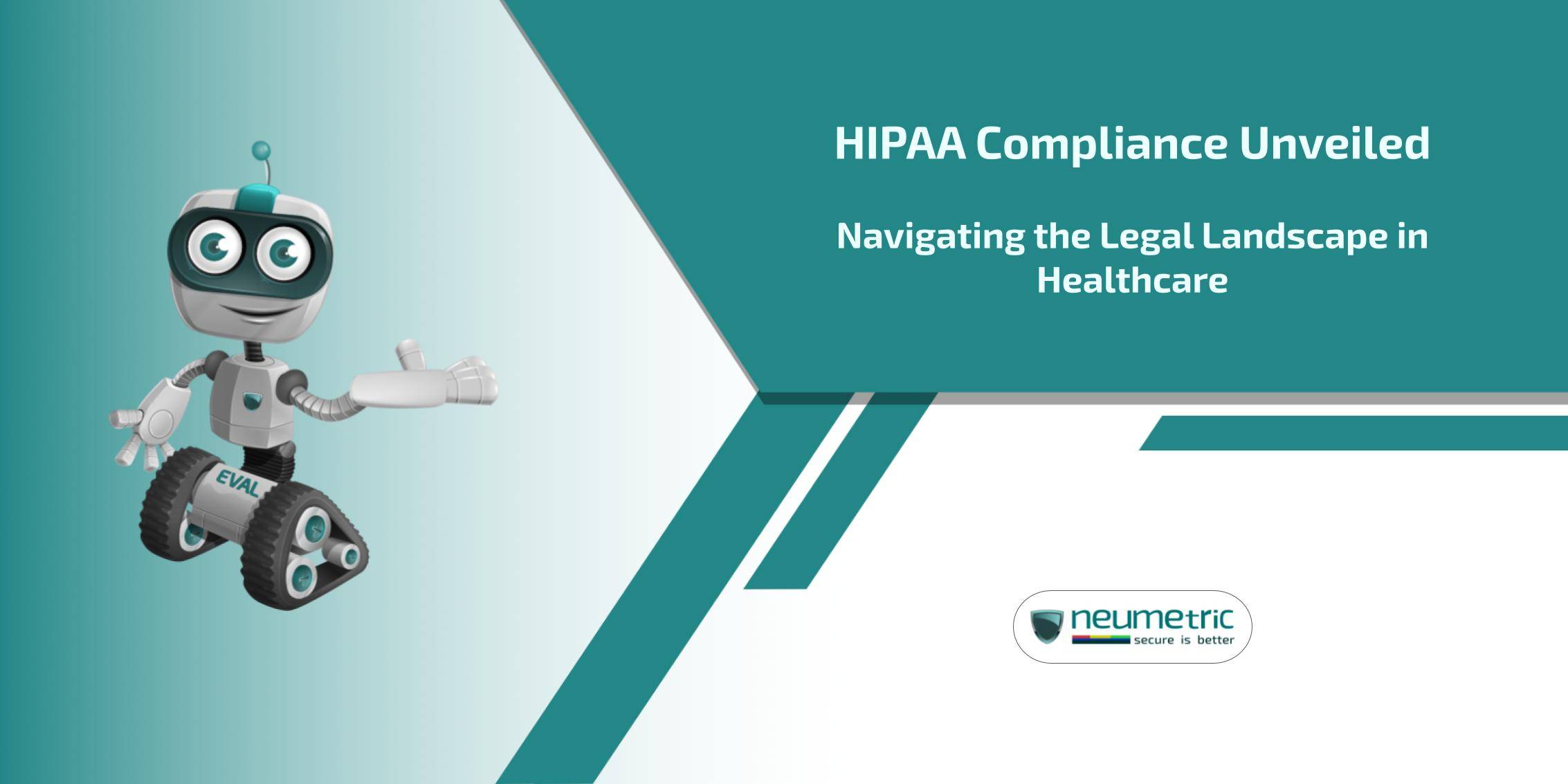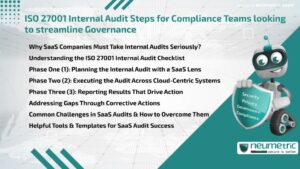Table of Contents
ToggleHIPAA Compliance Unveiled: Navigating the Legal Landscape in Healthcare
Introduction
In the fast-paced world of healthcare, where patient information is as vital as the treatments provided, the Health Insurance Portability & Accountability Act [HIPAA] stands as a critical safeguard. HIPAA, enacted in 1996, is more than just an acronym; it’s a pivotal piece of legislation designed to address the challenges surrounding the confidentiality & security of patient information. The primary goal of HIPAA is to ensure the seamless flow of healthcare information while safeguarding the privacy & security of sensitive data.
HIPAA comprises various rules & regulations, each serving a specific purpose. From the Privacy Rule, defining how healthcare providers should handle patient information, to the Security Rule, establishing standards for safeguarding electronic health information, the act establishes a comprehensive framework for protecting patient data.
HIPAA compliance acts as the guardian of patient privacy, providing individuals with the assurance that their medical information is handled with the utmost care. Beyond safeguarding personal privacy, HIPAA compliance plays a pivotal role in fostering trust within the healthcare system. When patients know their data is secure, they are more likely to share crucial information with their healthcare providers, enabling better-informed & personalised care.
Understanding HIPAA Regulations
Overview of the Health Insurance Portability & Accountability Act [HIPAA]
HIPAA, short for the Health Insurance Portability & Accountability Act, is like the guardian angel of your health information. It’s not just a set of rules; it’s a game-changer in how we handle & protect sensitive medical data. Picture it as the superhero swooping in to ensure your personal health details stay confidential & secure.
Back in 1996, when the internet was dial-up & smartphones were but a distant dream, HIPAA made its debut. The healthcare landscape was evolving, with the digitalization of patient records & a growing need for standardised regulations. HIPAA is designed to bridge the gap between sharing health information seamlessly & keeping it under lock & key.
Components of HIPAA Regulations
HIPAA isn’t a one-size-fits-all deal; it’s a multi-faceted gem with four main components, each with its own superhero power.
- Privacy Rule: Picture the Privacy Rule as the shield against unauthorised peeping into your medical history. It sets the guidelines for healthcare providers on how to handle & disclose your health information, making sure it’s not spilled like yesterday’s coffee.
- Security Rule: Now, the Security Rule is the tech-savvy superhero tackling the digital side of things. It lays down the law for protecting electronic health information, ensuring your sensitive details are like Fort Knox in the digital realm.
- Breach Notification Rule: If there’s a breach – an unauthorised party sneaking in – the Breach Notification Rule steps in. It’s the alarm system, making sure you’re promptly informed if your health information is ever compromised.
- Omnibus Rule: Think of the Omnibus Rule as the expansion pack, levelling up HIPAA to include business associates. It brings more players under the compliance umbrella, making sure everyone in the game is on the same page.
Navigating the Legal Landscape in Healthcare
Key Entities & Individuals Covered by HIPAA
- Covered Entities: Covered entities form the backbone of HIPAA regulations, encompassing a spectrum of healthcare participants.
- Healthcare Providers: From bustling hospitals to individual practitioners, healthcare providers play a crucial role in the application of HIPAA rules. The Privacy Rule, for instance, outlines how these entities should handle patient information, ensuring confidentiality & informed consent.
- Health Plans: Insurance companies & other entities that provide or pay the cost of medical care fall under the category of health plans. HIPAA mandates that they adhere to specific privacy & security standards, safeguarding the sensitive health information of individuals.
- Healthcare Clearinghouses: These are entities that process nonstandard health information into a standardised format. By doing so, healthcare clearinghouses ensure that the information is easily understandable & can be securely transmitted. HIPAA regulates their role in the healthcare information exchange.
- Business Associates: In the interconnected world of healthcare, business associates are pivotal players entrusted with handling protected health information [PHI] on behalf of covered entities.
- Examples of Business Associates: Third-party service providers, consultants & vendors that have access to PHI are considered business associates. This includes entities handling tasks such as billing, legal services or IT support.
- Responsibilities under HIPAA: Business associates are not exempt from HIPAA compliance. They must sign agreements with covered entities, known as business associate agreements [BAAs], outlining their obligations in maintaining the privacy & security of PHI.
Rights & Responsibilities of Covered Entities
- Patient Rights
- HIPAA grants individuals specific rights concerning their health information, promoting transparency & control over personal data.
- Access to Medical Records: Patients have the right to access their medical records, allowing them to stay informed about their health history & treatment plans.
- Notice of Privacy Practices [NPP]: Covered entities must provide individuals with a Notice of Privacy Practices, explaining how their health information may be used & disclosed. This document is a cornerstone in informing patients about their privacy rights.
- Requesting Amendments: Patients can request amendments to their health information if they believe it is inaccurate or incomplete.
- Responsibilities of Healthcare Providers
- Healthcare providers shoulder the responsibility of maintaining the confidentiality & security of patient information.
- Implementing Safeguards: Covered entities must establish safeguards to protect patient information. This involves physical, technical & administrative measures to prevent unauthorised access.
- Staff Training: Ensuring that healthcare staff is well-versed in HIPAA regulations is vital. Training programs should cover the proper handling of PHI, understanding patient rights & maintaining a culture of privacy within the organisation.
- Responsibilities of Health Plans
- Health plans, including insurance companies, are integral to the healthcare system & must adhere to specific obligations outlined by HIPAA.
- Establishing Safeguards: Health plans must implement measures to safeguard the privacy & security of individuals’ health information. This includes protecting data during storage, transmission & any other relevant processes.
- Facilitating Access: Health plans play a role in facilitating individuals’ access to their health information. This involves providing a means for individuals to obtain their records promptly.
HIPAA Compliance Challenges
Navigating the complex landscape of HIPAA compliance is no easy feat for healthcare organisations. Despite its critical importance, several challenges persist, requiring a vigilant approach to safeguard patient information.
Common Challenges Faced by Healthcare Organizations
- Staff Training & Awareness
- The Challenge: In a dynamic healthcare environment, ensuring that every member of the staff is well-versed in HIPAA regulations can be a daunting task.
- Addressing the Challenge: Implementing regular training programs & workshops to keep staff updated on the latest compliance requirements. This includes educating them on the nuances of the Privacy & Security Rules & emphasising the significance of patient confidentiality.
- Implementation of Security Measures
- The Challenge: With the increasing sophistication of cyber threats, healthcare organisations face the challenge of implementing robust security measures to protect electronic protected health information [ePHI].
- Addressing the Challenge: Investing in advanced cybersecurity technologies, conducting regular security assessments & establishing clear protocols for handling & securing ePHI. This involves encryption, access controls & regular audits to identify vulnerabilities.
- Keeping Pace with Technological Advancements
- The Challenge: The rapid evolution of technology introduces new tools & systems, creating the need for healthcare organisations to adapt without compromising on security.
- Addressing the Challenge: Implementing a proactive approach to stay abreast of technological advancements, conducting regular risk assessments & ensuring that new technologies comply with HIPAA regulations before integration.
Consequences of Non-Compliance
- Legal Ramifications
- The Consequence: Non-compliance with HIPAA can lead to severe legal consequences, including hefty fines & sanctions.
- Preventive Measures: Regularly reviewing & updating policies & procedures, conducting internal audits & ensuring that staff members are aware of the potential legal consequences of non-compliance.
- Reputational Damage
- The Consequence: A breach of patient information can significantly damage the reputation of a healthcare organisation, leading to a loss of trust among patients & the community.
- Preventive Measures: Prioritising transparency in communication, promptly notifying affected parties in the event of a breach & implementing proactive measures to prevent breaches in the first place.
- Financial Implications
- The Consequence: The financial burden of non-compliance extends beyond legal fines to potential litigation costs, remediation efforts & the loss of business opportunities.
- Preventive Measures: Allocating resources to invest in comprehensive compliance programs, conducting regular risk assessments & adopting a culture of continuous improvement to mitigate financial risks associated with non-compliance.
Steps Towards HIPAA Compliance
Achieving & maintaining HIPAA compliance is an ongoing process that requires a strategic & proactive approach. Healthcare organisations can take several essential steps to navigate the complexities of HIPAA regulations & ensure the secure handling of patient information.
Conducting a Risk Assessment
- Identifying Risks & Vulnerabilities
- The Initial Assessment: Begin with a comprehensive evaluation of potential risks & vulnerabilities in your organisation’s processes, systems & policies.
- Engaging Stakeholders: Involve key stakeholders, including IT professionals, legal experts & frontline staff, to ensure a holistic understanding of potential risks.
- Developing Mitigation Strategies
- Risk Mitigation Plan: Develop a robust plan to address identified risks. This includes implementing security measures, updating policies & establishing contingency plans for potential breaches.
- Regular Updates: Continuously reassess & update the risk mitigation plan to adapt to evolving threats & changes in the healthcare environment.
Implementing Policies & Procedures
- Privacy Policies
- Clear Documentation: Develop & document clear privacy policies that outline how patient information is collected, used & disclosed.
- Employee Training: Ensure that all staff members are well-informed about privacy policies through regular training programs, creating a culture of awareness within the organisation.
- Security Policies
- Access Controls: Implement strict access controls to limit the accessibility of patient information to authorised personnel only.
- Data Encryption: Employ encryption measures to secure electronic protected health information [ePHI] during transmission & storage.
Training & Education Programs
- Staff Training
- Regular Training Sessions: Conduct ongoing training sessions to educate staff on HIPAA regulations, privacy policies & security measures.
- Scenario-based Training: Utilise real-world scenarios to enhance staff understanding of how to handle sensitive information in various situations.
- Ongoing Education on Compliance Updates
- Stay Informed: Keep staff updated on any changes or updates to HIPAA regulations, ensuring that the organisation remains compliant with the latest standards.
- Continuous Improvement: Foster a culture of continuous improvement, encouraging staff to provide feedback & suggestions for enhancing compliance efforts.
Conclusion
As we conclude our journey through the intricate landscape of HIPAA compliance, it’s evident that safeguarding patient information is not just a legal requirement but a fundamental commitment to ethical healthcare practices. HIPAA serves as the guiding light in this endeavour, establishing a framework that balances the seamless exchange of health information with the protection of individual privacy. By navigating the legal landscape, understanding the rights & responsibilities of covered entities & business associates. We’ve delved into the challenges faced by healthcare organisations, from staff training to the implementation of robust security measures.
Realising the consequences of non-compliance, both legally & in terms of reputation, emphasises the critical importance of maintaining a proactive approach to HIPAA regulations. The financial implications & potential damage to an organisation’s standing underscore the need for continual vigilance. By identifying risks, developing mitigation strategies & fostering a culture of awareness, healthcare organisations can build a solid foundation for compliance.
In the ever-evolving field of healthcare, where data is as valuable as the treatments provided, HIPAA stands as a beacon, reminding us of the ethical responsibility to protect & respect the privacy of those under our care. Through diligence, education & a commitment to excellence, healthcare organisations can navigate the complexities of HIPAA compliance, ensuring a secure & trustworthy environment for both patients & practitioners alike.
FAQ
What are the main components of HIPAA & how do they contribute to safeguarding patient information?
HIPAA has four key components: Privacy Rule guides information handling, Security Rule secures electronic health info, Breach Notification Rule ensures timely reporting & Omnibus Rule extends compliance to business associates, enhancing overall protection.
How do healthcare organisations address the challenge of staff training & awareness in maintaining HIPAA compliance?
Tackling staff training involves regular sessions, real-world scenario learning & creating a culture of awareness. This ensures a well-informed team committed to upholding HIPAA regulations.
Can you elaborate on the consequences of non-compliance with HIPAA regulations?
Non-compliance can lead to legal penalties, reputational damage & financial implications. Proactive measures like regular audits, staff training & a robust risk mitigation plan are crucial to prevent these consequences.
What steps can healthcare organisations take to address the challenge of keeping pace with technological advancements in the context of HIPAA compliance?
Adapting to tech advancements requires regular risk assessments, ensuring new tech complies with HIPAA & fostering a culture of continuous improvement. This approach allows organisations to innovate securely.
How can healthcare organisations strike a balance between the seamless exchange of health information & the protection of individual privacy, as advocated by HIPAA?
Striking a balance involves implementing clear privacy policies, strict access controls & encryption for ePHI. Continuous staff education & staying informed about regulatory updates contribute to creating a secure environment for patient information.





